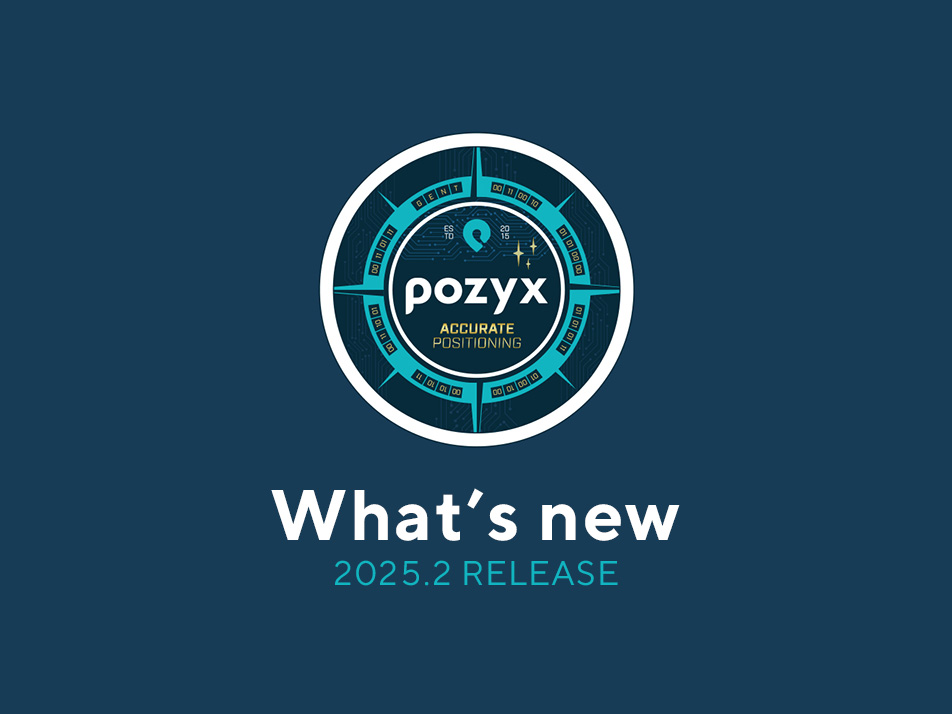Is 5G positioning ready for industrial asset tracking? (2023)
Prior to 5G, positioning capabilities in cellular networks were highly restricted, limited to locating devices within hundreds of meters for emergency purposes. However, with the advent of 5G, cellular positioning is gradually advancing, enabling real-time and precise tracking of devices. Both indoor and outdoor. This significant improvement opens up possibilities for autonomous vehicles, augmented and virtual reality applications, logistics as well as advancements in Industry 4.0.
However, with all the bold claims of 5G, it is difficult to get a grasp of what is actually possible today and under which conditions. In this blog post, we aim to tackle a fundamental question: Is 5G positioning currently equipped for industrial tracking use-cases, and how does it stack up against established industrial Real-Time Location System (RTLS) technologies like GPS, Bluetooth Low Energy(BLE), and ultra-wideband (UWB)?
In this article we will evaluate the readiness of:
At the end, we have some conclusions as well a list of frequently asked questions in response to this article which covers NB-IOT and 5G NR-light (RedCap). For people entirely new to 5G positioning, check out the following podcast episode with 5G guys where we discuss cellular positioning and the type of applications for these location services:
Incremental releases of 5G positioning
Firstly, it's important to highlight that 5G is an evolving standard, with new updates that enhance and introduce new features every few years.
Although the 3GPP release 15 officially launched 5G, proper positioning capabilities were not introduced until release 16. The latest release 17, approved in June 2022, is set to add even more positioning capabilities. It's important to know that each update may require upgrades, so it's crucial to understand the different capabilities of the releases.
In the table below, you can see the different technical capabilities of the different releases.
Next, let’s dive into 5 critical categories to see if 5G positioning is ready for it.

Discover the Pozyx Platform
The Pozyx Platform brings indoor and outdoor positioning data together to provide full asset visibility, automation and location-based insights for logistics and manufacturing.
Pozyx Platform5G location trackers
Potentially the biggest deal-breaker for 5G-based positioning today are the location trackers (or tags). Currently, tag prices are still prohibitively high as the 5G chipsets are primarily designed for smartphones, not asset tags. What’s worse, is that the average battery life is in the order of days with release 16. For most industrial asset tracking solutions this is unacceptable. It’s not just a matter of tag design, it’s inherent to the current standard and we will have to wait until 5G-advanced before benefitting from multi-year battery lifetimes.
In comparison, technologies like BLE, UWB or GPS already have tags available in large volumes at lower prices with battery lifetimes upwards of 5 years, making them more accessible for widespread deployment. Looking at UWB for example, which is the most recent technology for accurate indoor tracking, it took about 6 years after the initial release of UWB chip technology in 2014, before device prices dropped to levels suitable for large deployments.
Verdict: not ready.
Multi-purpose 5G Infrastructure
One of the main advantages of using 5G for positioning is multi-purpose use of the same network infrastructure, which can can significantly improve the business case for rolling out private 5G.
It's important to consider that the infrastructure requirements for connectivity and positioning can differ significantly. While a single base station placed in the center of an area can provide optimal connectivity, positioning requires multiple base stations placed in the corners for accurate tracking. If not planned carefully from the start, the infrastructure may not meet the positioning requirements, leading to suboptimal performance and unreliable tracking results. In general, positioning will require denser 5G infrastructure as compared to connectivity.
Verdict: ready.
Accurate (indoor) 5G positioning
With the current commercially available 5G release 16, it is possible to achieve 3m indoor and 10m outdoor accuracy in 80% of the time, with proper infrastructure.

5G release 17 aims to achieve better accuracy by leveraging higher bandwidth available at frequencies above 24GHz, also known as millimeter-wave (mmWave) frequencies. While this can result in decimeter-level accuracy similar to UWB indoor positioning, it comes with limitations. The mmWave signals have limited penetration capabilities, unable to pass through walls and easily blocked by obstacles or people. To achieve the desired accuracy, multiple base stations (compatible with release 17) would need to be installed in every room, leading to high infrastructure and cabling costs.
Verdict: not ready.
Seamless indoor and outdoor 5G tracking
Another advantage of 5G positioning is the ability to perform seamless indoor and outdoor localisation using the same technology. Other RTLS technologies cannot offer this capability today and must resort to a combination of different technologies to achieve indoor and outdoor localisation.
However, to achieve this ability, public networks need to have this location functionality enabled and sufficient coverage is required to perform outdoor positioning. If not, location tracking will fall back to previous generation performance with hundreds of meters of errors. In practice, we see that ‘positioning coverage’ isn’t there yet. In fact, some telecoms are offering trackers with combined 5G and GPS to alleviate this issue.
Verdict: half ready
5G scalability
5G is built for scale, so the network can easily handle large number of assets to track. Furthermore, for medium-accuracy positioning (10m outdoor as targeted by release 16), the radio range can cover larger areas with limited outdoor infrastructure for private 5G networks.
Verdict: ready
Conclusion:
While 5G-based location tracking offers exciting possibilities for industrial applications, 5G positioning needs to move beyond the concept phase and buildout real world deployments.
In the shorter term, market studies show that 5G positioning alone is unlikely to be able to address many use cases effectively. Ultimately, 5G positioning is unlikely to replace alternative RTLS technologies. However, for many industry verticals, the unique combination of communications and positioning, as well as seamless indoor and outdoor coverage, backed by the 5G ecosystem, will prove a strong value proposition.That same 5G ecosystem must come together to deliver improvements on accuracy, reliability, scalability, power consumption reductions, cost, ease of deployment, latency, and many other key metrics demanded by the varied RTLS use-cases.
Pozyx and 5G positioning
The Pozyx platform is an asset tracking software that can bring location data together from multiple sources, including from 5G positioning. Both indoor and outdoor. The platform leverages location data to solve numerous critical industrial use-cases including inventory management, shop-floor visibility, location-based automation and more.
Frequently asked questions
After releasing this article, we received a number of questions that we want to clarify here as well. Thank you everyone for the contributions.
1. Will NB-IoT or Cat-M devices also benefit from 5G positioning?
NB-IoT and Cat-M are in fact 4G technologies that have been included in 5G as well. These devices do not benefit from the advancements in positioning under 5G.
2. Will NR-light (RedCap) bring low-cost 5G location trackers?
NR-light is expected to reduce cost and increase battery life (to months) as compared to standard 5G devices. However, we expect that it will still not be comparable to BLE or UWB tags which have years of battery life at a low cost. We expect this because NR-light is positioned in between NB-IOT and standard 5G in terms of complexity and battery life. Today, even NB-IOT is not able to do frequent updates (for example, every 1 or 10 seconds) and achieve multi-year battery life, and it is still relatively expensive to implement. So with NR-light you will do worse than NB-IOT meaning that tag prices will still be relatively high and battery life (or positioning updates) limited.
Furthermore, NR-light limits bandwidth to 20MHz, which (significantly) impacts positioning accuracy. So it will be limited to lower accuracy applications. In fact, 3GPP will only be focussing on the positioning requirements in the second generation of NR-light scheduled for release 18.

Written by
Samuel Van de Velde
CTO & Co-Founder at Pozyx
Samuel is an electrical engineer with a strong interest in location technology. Skilled in Entrepreneurship, Public Speaking, Product Management, internet of things (IoT), and Machine Learning. After graduating In 2010, he joined the Department of Telecommunications and Digital Information Processing (TELIN) to pursue a Ph.D. degree on the topic of collaborative indoor localisation. In 2015, he founded the spin-off company Pozyx out of that research.









